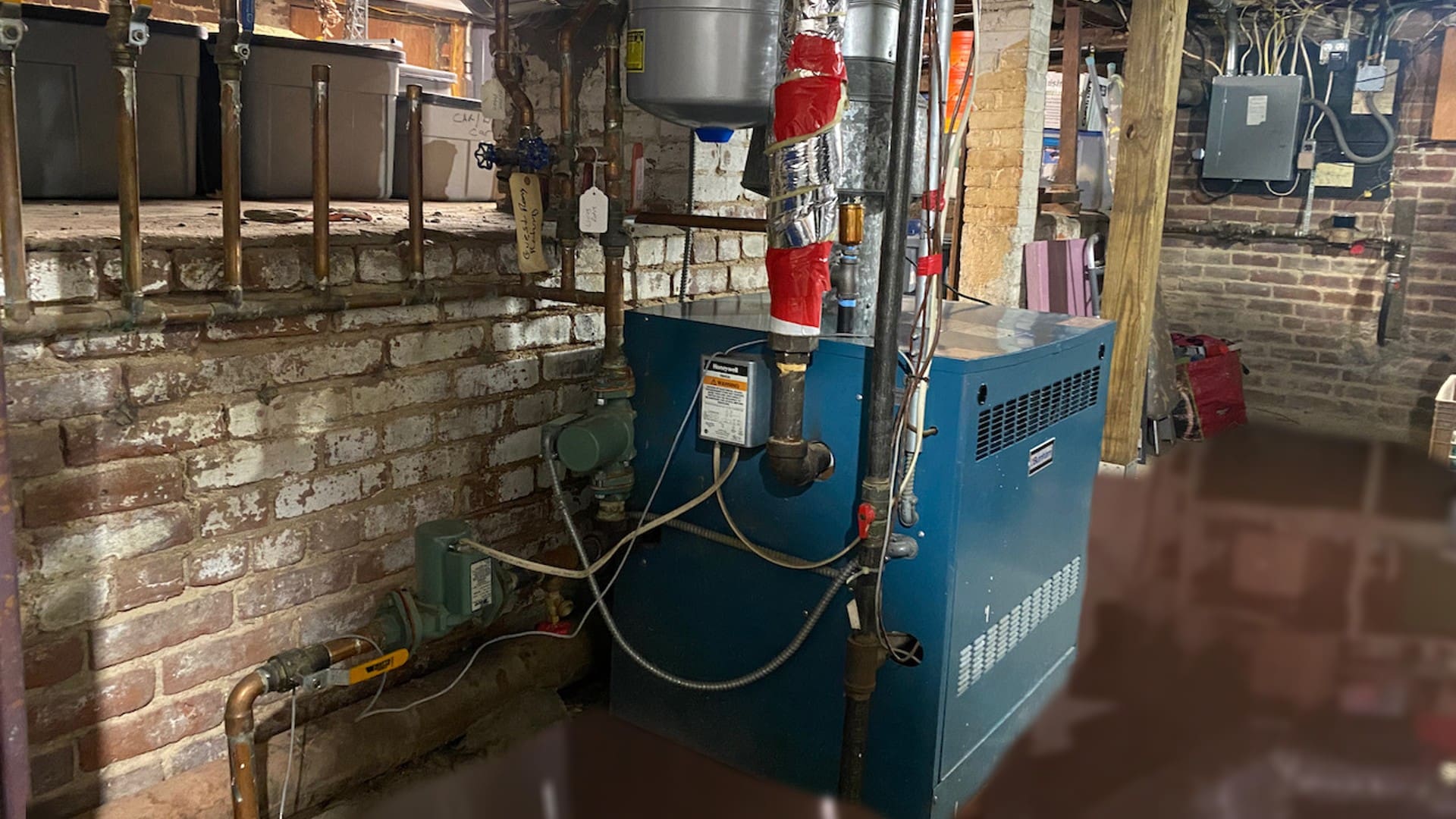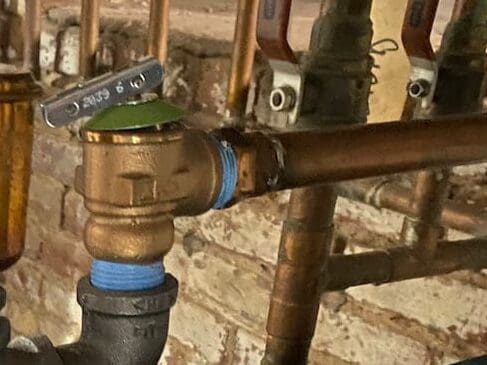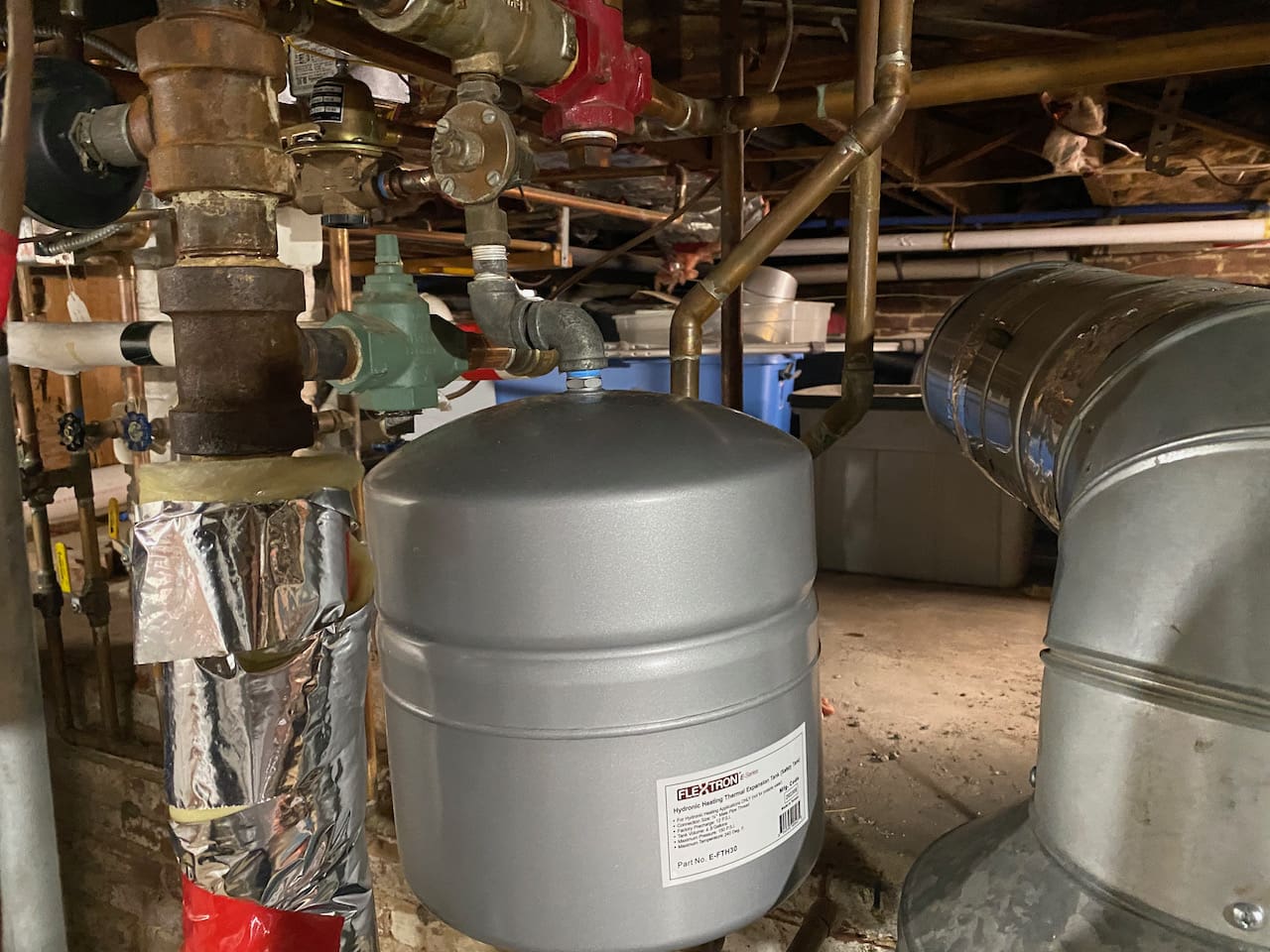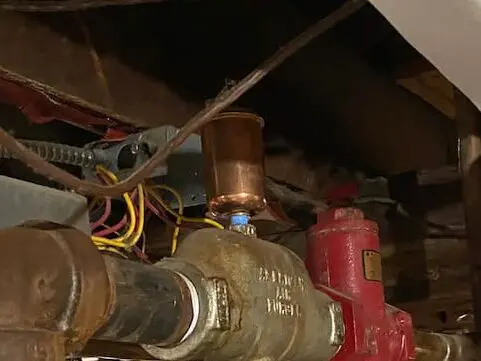I Did Not Know My Boiler’s Expansion Tank Need To Be Checked
It was a Sunday night around 11 o’clock and I wanted to raise the heat in the room because it was cold and breezy outside. I noticed that after increasing the thermostat the heat never came up, the baseboards were cold.
I headed down to the basement to check out the boiler. When I opened the basement door and bang! I got hit in the face with hot smelly steam. This likely came from the hot water that had leaked onto the floor from the boiler. I immediately turned off the emergency switch at the top of the steps.
After inspecting the boiler, I can see that the problem was with the expansion tank.

The next day, we didn’t have heat or hot water in the house and we had to quickly try to repair the problem. As we just talked about, it looked like the expansion tank had failed. The purpose of the expansion tank in a boiler system is to regulate the water pressure being built-up by the boiler. Inside of the expansion tank is a rubber diaphragm that is suppose to move up and down, keeping the pressure at a specific level. When the diaphragm fails, the water pressure increases and the temperature pressure relief (TPR) valve opens up, preventing the boiler from exploding from all that built-up heated water pressure.


As a precaution, not only did I replace the expansion tank, I replaced the incoming reducing valve. The incoming reducing valve takes the water pressure from the outside water pressure (69 psi) to operating water pressure. The outside water line is typically from your water company.

Lastly, I replaced one of the automatic air eliminator to make sure that the system was made safe from over-pressurization.

Come the next day, after replacing all these parts, I turned on the boiler and everything started working again. If you have a servicing company, it’s important that they check the pressure coming off of the expansion tank, annually. Many service men/women, just tap the tank, but they should really use an air gauge.
